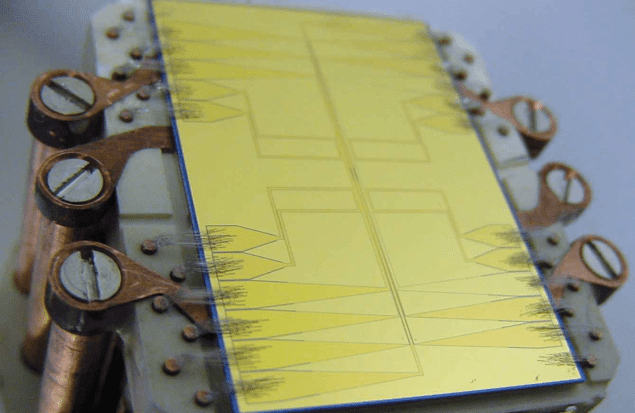
Three different papers by three different groups on the same theme back-to-back in Nature? That is unusual.
Yes, which is why they caught my eye. The papers all look rather interesting: they are about the discovery of universal behaviour in systems far from equilibrium.
That sounds pretty heavy going. Can you remind me what a system far from equilibrium is all about?
Physicists are pretty good describing matter at or near equilibrium. We can predict, for example, how a wide range of materials will respond to gradual changes in temperature, applied magnetic field and other parameters. However, many processes that occur in nature are very far from equilibrium and can involve rapid changes. These occur at hugely different length scales and include the clustering of matter in the universe; the formation of hurricanes; the function of biological molecules; and the quark-gluon plasma created when nuclei are smashed together.
Ok, I get that. What is universality in physics?
Universality is the observation that a wide range of macroscopic systems behave in much the same way, even if the systems have different microscopic components. A familiar example is the phase transition from liquid to gas. It usually occurs the same way regardless of what molecules comprise the gas and how the molecules interact with each other.
So universality usually applies to systems that are at equilibrium?
That’s right. But now three independent groups of researchers have found universality in different systems very far from equilibrium. In all three experiments atomic gases were trapped and chilled to ultracold temperatures to form either a Bose-Einstein condensate (BEC) or an uncondensed gas. A BEC is a quantum-mechanical state of matter in which all the constituent atoms are in a single quantum state.
And why did they use ultracold atoms?
Interactions between trapped ultracold atoms can be controlled and changed by applying magnetic fields or electromagnetic radiation. The teams could therefore make rapid changes to their experimental parameters to knock their systems very far from equilibrium. Such a rapid change is known as a “quench” as it is like the quenching used in materials processing whereby a very hot sample is cooled rapidly by plunging it into liquid.
I think we are getting there. So who did what?
Christoph Eigen, Zoran Hadzibabic and colleagues at the University of Cambridge and University of Colorado quenched their BEC of atoms by causing a rapid change in the “scattering length” of the atoms. This parameter is controlled using an applied magnetic field and describes the maximum distance between two interacting atoms, beyond which the atoms will not be affected by each other’s presence.
The team began with a BEC with a scattering length of zero (no interactions between atoms) and suddenly changed it to infinity (all atoms interact with one another). They did this with BECs at different initial densities and temperatures and measured several dynamical properties of the system such as the spectral energy density. These properties showed universal behaviour in systems with a range of different densities and temperatures – something that the team describes as surprising.
And what did the second group do?
Jörg Schmiedmayer and colleagues at the Technical University of Vienna and the University of Heidelberg used an ultracold gas of bosonic atoms. Their experiment began with the gas held in a pencil-shaped 3D trap (see figure). Then, the gas was quenched by changing the parameters of the trap so that atoms moving radially away from the long axis of the trap could escape. The trap was then adjusted so that the remaining atoms were no longer able to move in the radial direction – thus creating a 1D gas far from equilibrium.
The team then measured the density and momentum of the gas as it approached equilibrium. Over a time scale of 0.7-75 ms, they found that the relationship between the density and momentum of the gas remained the same, regardless of the initial conditions – which is evidence for a type of universal behaviour called a “non-thermal fixed point”.
Were they the only team to see a non-thermal fixed point?
No, Maximilian Prüfer and colleagues at the University of Heidelberg also spotted one in a very different system comprising a BEC of atoms with intrinsic spins. Their experiment began with all the atoms in the spin-zero state. Then, a microwave signal was applied to the BEC, which suddenly allows the spins to fluctuate. The team measured the correlation between the directions of the spins as a function of the momentum of the atoms. These measurements were made at different times (between 4-9 s) after the quench as the system approached equilibrium. The relationship between spin correlation and momentum remained the same – evidence for “non-thermal fixed point” universal behaviour.
When cold warms faster than hot
The work sounds difficult.
You could say that, but it could prove very useful. Describing their work in Nature, Prüfer and colleagues write, “Predicting the dynamics of quantum systems far from equilibrium represents one of the most challenging problems in theoretical many-body physics”.
Also in Nature are papers by Schmiedmayer’s team and by Eigen, Hadzibabic and colleagues.
Any chance I could study far-from-equilibrium physics in my kitchen?
Check-out Jennifer Ouellette’s feature article “When cold warms faster than hot”, which is all about the Mpemba effect. No fancy equipment is needed, just an ice-cube tray and a freezer. I look forward to reading your paper.



